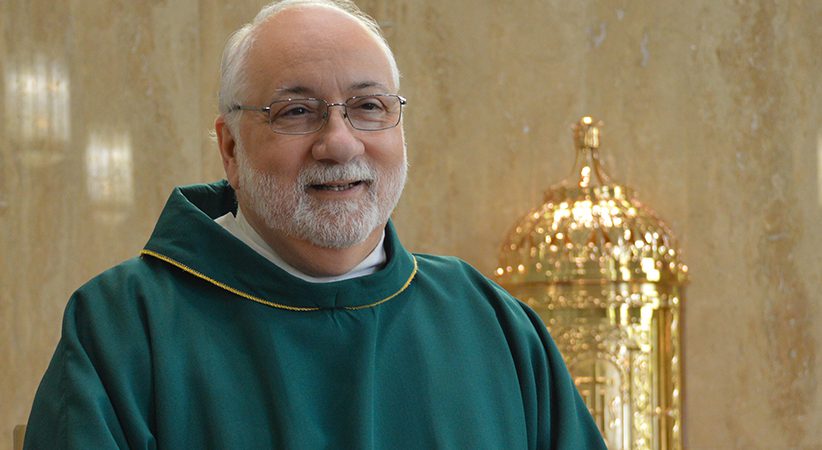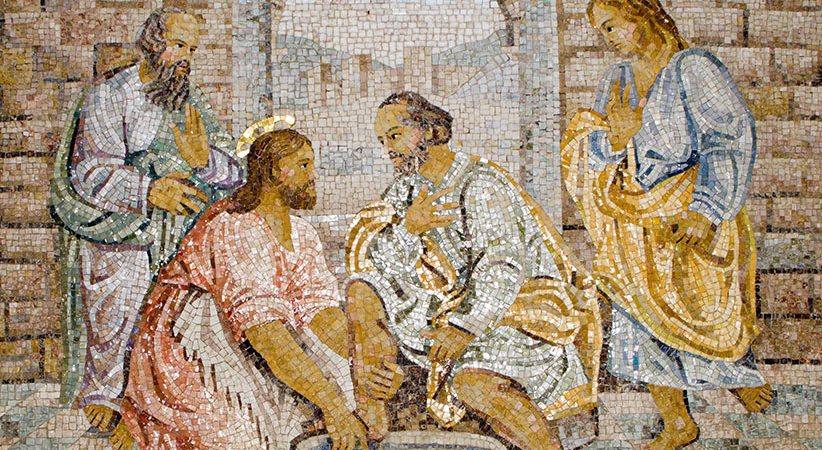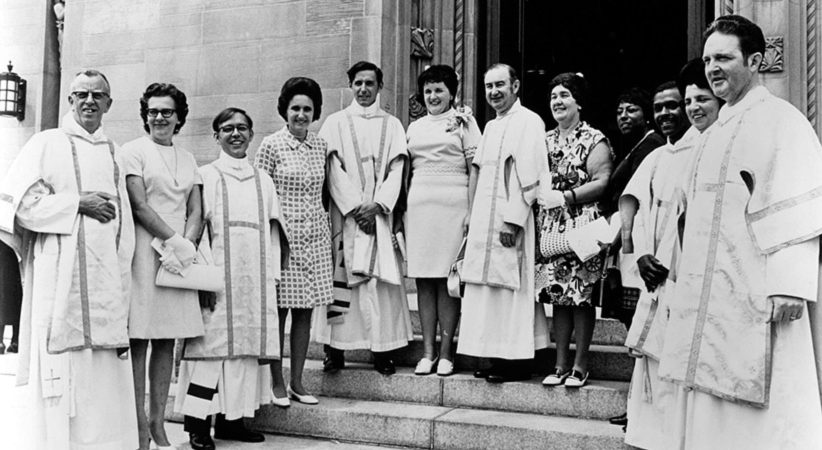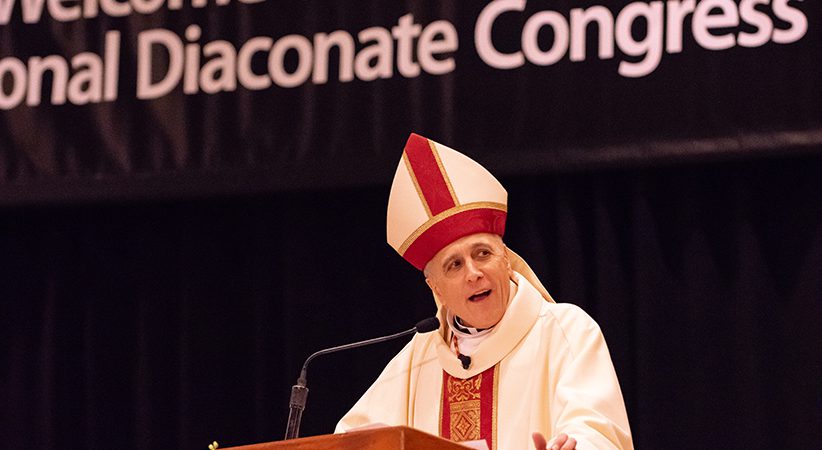‘Configured to Christ’ Digs Deeply into Human Nature
Keating affirms us in our stumbling rather than condemning us for failures
Deacon David A. Lopez Comments Off on ‘Configured to Christ’ Digs Deeply into Human Nature
“Believe what you read; teach what you believe; practice what you teach.” This exhortation to newly ordained deacons (and permanently relevant, therefore, to all three ranks of the clergy) points to the unchanging Gospel of our Lord, Jesus Christ. The sacramental grace of holy orders, building on that of baptism and confirmation, allows us not merely to imitate the example of Christ but actually to enter into his very life, joining our broken, fallible, human heart in all its disturbing complexity to his Most Sacred Heart in all its utter simplicity of love. Only by this deepest interior submission can we serve as Christ serves, allowing us to be made present in ourselves and, therefore, in the Church, and, therefore, in the lives of those we serve as clergy, offering the healing and transforming love of our Savior.
The problem, of course, is that what we “read” (and thus imitate and teach, even unwittingly) is so often not the Good News of salvation, but the sordid, alluring palimpsest of “the world, the flesh and the devil.” We all need constant accompaniment and steady leadership in order continually to turn the “eyes of the heart” away from sin’s fascination and back to the Cross. Hence the importance of spiritual direction for the clergy, both before and after ordination (and indeed, for the journey of every disciple). “Your Word, O Lord, is a lamp for my feet.” Without the guidance of a competent and trustworthy spiritual companion, how can we overcome our interior blindness and keep alight in our hearts the fire of divine love?
“Configured to Christ: On Spiritual Direction and Clergy Formation” (Emmaus Road Publishing, $19.95) brings together and makes available 18 of Deacon James Keating’s thought-provoking, spiritually insightful articles, originally published between 2004 and 2019 in a variety of theological and pastoral journals. From two decades of experience as a permanent deacon, a formator of deacons and priests, and a spiritual director (and directee), Keating digs deep into the seemingly intractable problems of our stubborn human nature.
The wisdom he extracts will help clergy (and all disciples) at every stage to understand better — and thus submit more willingly — to the spiritual and human formation teaching the “eyes of the heart” to remain ever fixed on Christ.
His insights are characteristically positive, affirming us in our stumbling rather than condemning us for failures; affective, focusing on the loving relationship with God in all its permutations and, therefore, emphasizing God’s fidelity and constancy; penetrating, “like a two-edged sword,” through the layers of excuses we invent to protect our heart from the need for conversion; and joyful, exhibiting profound warmth, which is the “unmistakable sign of the divine presence.”
These articles are arranged thematically rather than chronologically and are grouped under three headings. A brief example from each will show their quality. Part 1, “The Interior Life of the Cleric” (four articles), concerns how we receive, or fail to receive, the divine love that animates our vocations:
“The more we attend to the mysteries of Christ in prayer, participate in them at the Eucharist, and meditate upon them in Scripture, the more our imaginations will brighten with Christian creativity and our wills ignite in charitable behavior. From all this, we become happy, whole, integrated, simple, and holy.
“Such attending, participating, and meditating are the attitudes that express our availability to receive love from God. … Christ, then, is the revelation of God’s true intentions toward us: to invite, attract, and seduce (see Jer 20:7) all into his ‘house’ (Lk 14:23) by His action of self-sacrifice upon the Cross and the unrelenting life that flows through the Resurrection. Even this momentous revelation does not affect immediate conversion in us; most change in us is progressive and developmental. God has the power to wait, influence, and ‘suffer’ our conversions at levels of love we cannot even imagine — we need patience as well” (Page 57).
Part 2, “The Formation of the Cleric” (nine articles), covers a broad swath of issues in initial formation. Attention is mostly given to seminaries, but the application to other formation contexts will be obvious:
“Contemplation deepens the seminarian’s connection to the Church, since he never receives anything in legitimate contemplation other than what the Church has already received in the Paschal Mystery. This connection to the Church, and the gift that is Christ’s own mission, enters the seminarian and begins to order his thinking. … The seminarian is invited to press his own wounds (affective, psychological, and physical) into the mystery of Christ’s open wounds upon the Cross. In this activity, the seminarian’s wounds, some of which are brought about by his own sins, meet the pierced heart of Christ. This heart, open and vulnerable as well, becomes the corrective, the balm for the seminarian’s wounds. … Christ’s wound of love meets the seminarian’s ego wound and transfixes the site into a place of intimacy and new life (felix culpa)” (Pages 115-116).
Part 3, “The Pastoral Mission of the Cleric” (five articles), focuses on ministerial life after ordination. The emphasis is again relational: clergy must maintain a living, affective relationship with Christ so that they can serve the laity in their human, ecclesial, sacramental relationships and thus grow together with divine love:
“With ever more accurate darts of love the Holy Spirit opens our consciences before God so that deeper and more effective healing can occur. … For those who have the courage to approach the founts of healing, the Eucharist and the Sacrament of Reconciliation, the interior life begins to brighten. His presence, His mysteries, and the hope they bring within our souls begin to define each day. … Something greater than the mantras of self-help gibberish and post modern syncretism is demanded if spiritual healing is to occur. An encounter must occur. We must be seized with the presence of God” (Pages 296-297).
In attempting to plumb these mysteries of human and divine love, Keating repeatedly turns to this dramatic double metaphor of “suffering the wound.” Each of us is “wounded” in many ways by sin. Original and personal sin separate us from God, harming our nature and our purpose. Sins embedded in culture by popular acceptance wound our conscience and our interior sight. We need to be healed, and God chooses to heal us through still more “wounds” — the mysterious kenosis of the Incarnation, the bloody Passion and the permissive divine will that gives scope to our abuses of free will. Both we and God suffer our finitude. In this shared suffering is the hope of our redemption from all sin and suffering.
Keating’s insight, experience, compassion and generosity as an author keep this vital nugget of wisdom (and many others) before our eyes. Anyone who is serious about their relationship with God, or accompanies others toward God, will benefit greatly from close and prayerful reading.
DEACON DAVID A. LOPEZ, Ph.D., is the editor of the Josephinum Diaconal Review and serves as the director of deacon formation and as chancellor for the Diocese of Sioux City, Iowa.





